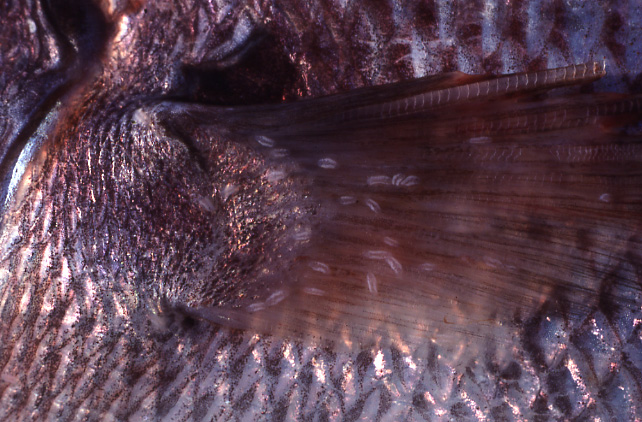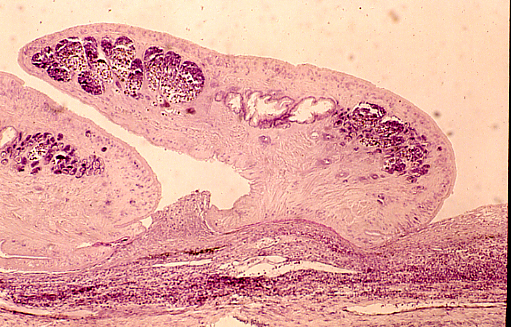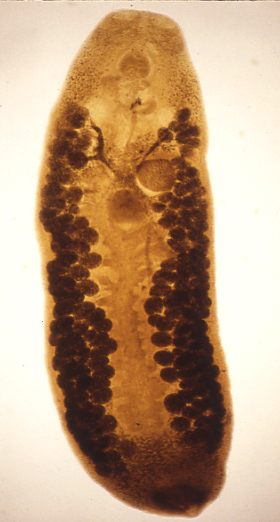
| Parasite | Anoplodiscus tai |
|---|---|
| Taxonomy | Plathyhelminthes, Monogenea, Monopisthocotylea |
| Host | Red sea bream (Pagrus major) |
| Infection site | Fin, skin |
| Clinical signs | The parasite (a few mm) attaches the skin and the fin (Fig. 1). Abrasive lesions on the body and partial losses of the fins are observed. Heavily infected fish exhibits anorexia and emaciates. |
| Parasitology | The body is 3-4 mm long, flat and elongated (Fig. 2). The parasite attaches by a haptor at the posterior end. The parasite does not migrate from the attached site, and the haptor is encased by the host' connective tissue (Fig. 3). |
| Pathology |
Infected fish becomes emaciated due to anorexia, but the infection does not cause the mortality. Host tissues beneath the haptor are elevated due to strong sucking and pinching function and are infiltrated by numerous inflammatory cells. Attachment by the haptor causes loss of epithelium and eventually led to partial loss of fins (Ogawa, 1994). |
| Health hazard | Since this parasite is not infectious to human, it is harmless in food hygiene. |
| Diagnosis | Anoplodiscus tai can be morphologically distinguished from A. spari parasitizing the skin of black porgy. A. spari is smaller (2-3 mm) and leaf-shaped. |
| Other information | A freshwater-bath is effective for removing the parasite. |
| References | Ogawa, K. (1994): Anoplodiscus tai sp. nov. (Monogenea: Anoplodiscidae) from cultured red sea bream Pagrus major. Fish Pathol., 29, 5-10. |

Fig. 1. Anoplodiscus tai parasitizing the fin of red sea bream.
(Photos by K. Ogawa)


Fig. 2. Anoplodiscus tai. Note the sucker-like structure
at the posterior end.
Fig. 3. A. tai attaching on the fin which is hypertrophied by
the parasite.